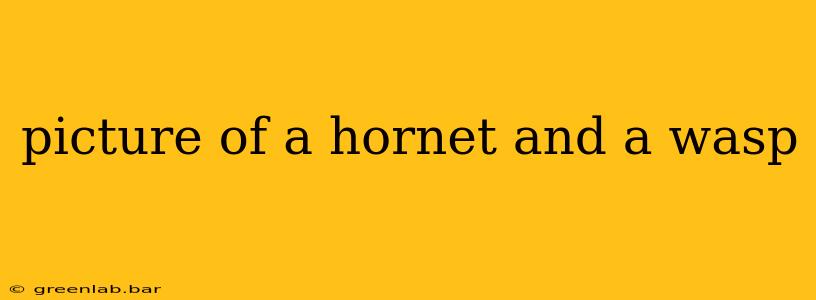Hornets vs. Wasps: A Detailed Comparison of These Stinging Insects
Hornets and wasps are often confused, and with good reason: they share a similar appearance and both pack a painful sting. However, understanding the key differences between these stinging insects is crucial for safety and proper identification. This comprehensive guide will delve into the distinctions between hornets and wasps, exploring their physical characteristics, nesting habits, and the potential dangers they pose.
Physical Characteristics: Spotting the Difference
While visual identification can be tricky, some key features can help you tell hornets and wasps apart:
-
Size: Generally, hornets are larger than most wasps. While there's overlap, hornets tend to be at least an inch long, while many wasps are smaller. The European hornet, for example, is significantly larger than a typical yellow jacket.
-
Coloration: This is where things get a bit blurry. Many wasps exhibit bright, contrasting colors like yellow and black, while hornets often have similar color patterns, but with a more reddish-brown or dark brown coloration prominent on their bodies. However, some wasp species also exhibit darker tones.
-
Body Shape: While subtle, hornets tend to have a more robust, stockier body compared to some wasp species. Wasps often have a more slender and elongated build. However, this is not a foolproof method of identification.
-
Head Shape: Hornets often have a larger, more prominent head compared to wasps.
It's important to note that these are general guidelines. There's significant variation within both hornet and wasp families, making definitive identification based solely on appearance challenging.
Nesting Habits: Where They Build Their Homes
Understanding the nesting habits of hornets and wasps can aid in identifying them and also in avoiding potential conflicts.
-
Hornet Nests: Hornets are known for constructing large, enclosed nests, often resembling a grey papery structure. These nests are usually found in sheltered locations like tree hollows, attics, or even underground.
-
Wasp Nests: Wasps exhibit more diversity in their nesting habits. Some wasps build exposed nests made of a papery material, often attached to eaves, branches, or other structures. Others build nests underground or in cavities. Yellow jackets, for example, are known for building nests in the ground or inside wall voids.
Stinging and Venom: The Severity of the Sting
Both hornets and wasps possess stingers and can inflict painful stings. However, the severity of the sting can vary based on species and individual reactions.
-
Hornet Venom: Hornet venom is typically potent, and while not necessarily more toxic than some wasp venoms, their larger size means they can inject more venom with a single sting. Multiple stings can be particularly dangerous.
-
Wasp Venom: The toxicity of wasp venom varies greatly depending on the species. Yellow jackets, for instance, are known for their aggressive behavior and can deliver multiple stings.
Conclusion: Knowing Your Enemy
While identifying hornets and wasps precisely based on appearance alone can be difficult, understanding their size, coloration, nesting habits, and the potential dangers of their stings can significantly enhance your awareness and safety. If you encounter a nest, it’s always best to maintain a safe distance and seek professional assistance for removal if necessary. Always remember to consult experts for accurate identification and pest control solutions.

